Waterways for Wildlife Conservation Update
Launched less than two years ago, the NWTF’s Waterways for Wildlife Initiative stands as a blueprint for delivering critical riparian conservation projects, impacting water and wildlife resources, and underscoring that a wide spectrum of stakeholders can collaborate at unprecedented levels to address the most significant conservation challenges.
Waterways for Wildlife was created by the NWTF to address urgent conservation needs in riparian ecosystems, largely situated along creeks, streams and rivers across the American West and Great Plains. Wild turkeys and an array of wildlife species depend upon these ecosystems for water, food, cover, roosting, nesting and travel corridors. Unfortunately, many riparian ecosystems are in poor condition due to various causes – increased water demands, disrupted floodplains and changes in land use, to name a few – that have altered their natural cycle and impacted the health of these essential communities and the wildlife that inhabit them.
In 2022, the NWTF’s Waterways for Wildlife initiative, with partner match, allocated $2.8 million to its first 14 conservation projects to address the increasing challenges riparian areas face. A year later, the NWTF and its partners added 20 additional projects under the Waterways for Wildlife umbrella with a $5.3 million collaborative investment.
Since its outset, Waterways for Wildlife set a goal to collaboratively allocate $40 million to critical water conservation projects over the next decade, ultimately enhancing 1,500 stream miles and 75,000 acres of wildlife habitat.
In less than two years, the initiative is on the strait to accomplish its ambitious 10-year goal.
And while the investments and headway into the initiative are promising, so are the projects. Some projects are multi-year efforts, and some were completed in the year they began. Projects vary in how they benefit water conservation, from removing invasive species to reconnecting floodplains. Below is a summary of Waterways for Wildlife’s completed and ongoing projects.
Completed Projects

Pecos River Invasive Species Removal
State: New Mexico
Enhanced Acres: 10; Stream Miles: 0.57
Summary: Salt cedar has re-sprouted since prior management and was once again outcompeted native cottonwoods and willows. Removal of these invasive shrubs increased water quality and quantity and allowed native cottonwoods and willows to grow. In 2018, the New Mexico Game and Fish Department released Rio Grande turkeys in this area, making this a needed maintenance benefit for the area.
Partners: Bureau of Land Management
Gene Howe WMA Invasive Species Removal

State: Texas
Acres Enhanced: 87; Stream Miles: 5.36
Summary: This project consisted of silt removal in a derelict pond to help facilitate the Texas Parks and Wildlife Department’s rotational grazing program on the WMA. TPWD also grubbed invasive species such as Russian olive, salt cedar and Eastern red cedar. The silted in pond in Upper Meadow pasture had siltation successfully removed and surface water was restored. Originally, it was estimated that the WMA would gain 0.45 acres of surface water; however, the Upper Meadow Pond ended up adding 0.7 acres of surface water. We were also able to rehabilitate additional waterways that had silted in overtime adding 0.97 more surface acres of water. Invasive shrubs (Russian olive, saltcedar, and eastern red cedar) were removed from the landscape as planned. The footprint of the entire project was approximately 993 acres.
Partners: Texas Parks and Wildlife Department
Brzon WA Riparian Vegetation Management
State: Kansas
Acres Enhanced: 320; Stream Miles: 0.76
Summary: This project consisted of 320 acres of invasive species removal along Rose Creek on the Brzon Wildlife Area.
Partners: Kansas Department of Wildlife and Parks
Painted Woods Creek Addition
State: North Dakota
Enhanced Acres: 166; Stream Miles: 0.85
Partners: North Dakota Natural Resources Trust, North Dakota Game and Fish Commission, American Foundation for Wildlife
Summary: This project was a multi-partner effort to acquire 166 acres of Missouri River bottoms directly adjacent to the Painted Woods Creek WMA. The acquisition increased the Painted Woods Creek WMA to 1,191 acres.
Castle Creek Fencing Kinney Canyon Walk-in Fishery
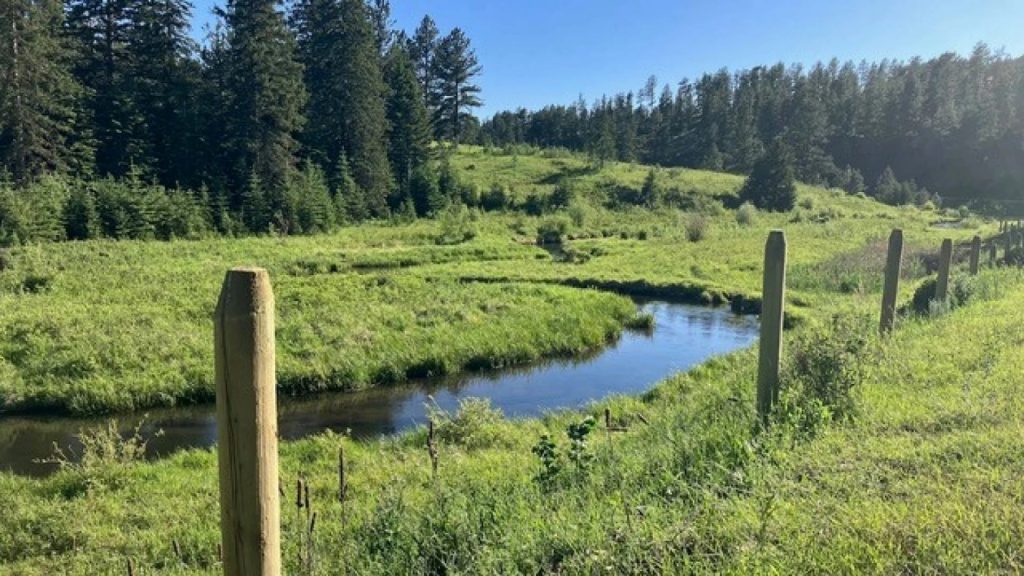
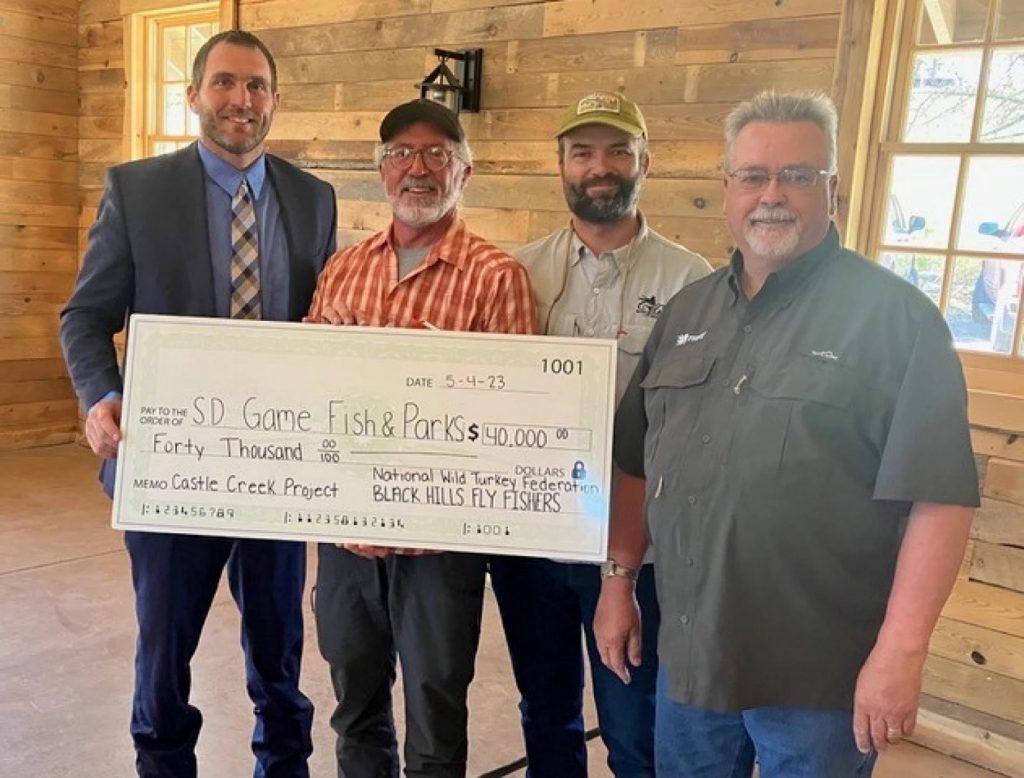
State: South Dakota
Enhanced Acres: 3; Stream Miles: 1.50
Summary: This project improved livestock exclusion fencing on the Castle Creek. This work allowed roughly 3 acres of streambanks to stabilize with native vegetation, increasing water quality and fish habitat.
Partners: South Dakota Game, Fish and Parks, United States Forest Service, Black Hills Fly Fishers
Oxbows of the Big Sioux River Outreach Project
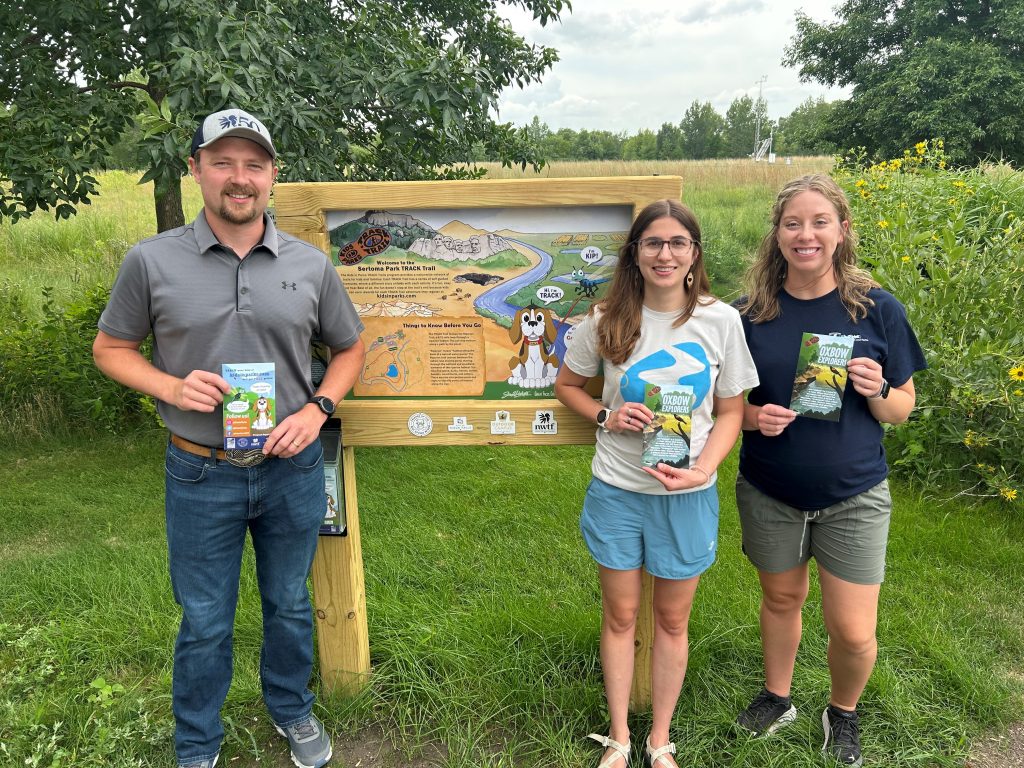
State: South Dakota
Enhanced Acres: Not applicable; Stream Miles: Not applicable
Summary: This educational project helped print brochures to inform visitors of South Dakota Game, Fish and Parks’ Outdoor Campus in Sioux Falls on the importance of oxbow lakes, water quality and riparian wildlife habitat.
Partners: South Dakota Game, Fish and Parks, Friends of the Big Sioux River
NorthWestern Energy Exclosures
State: Montana
Enhanced Acres: 11; Stream Miles: Not Applicable
Summary: This project took place on the Missouri River in central Montana and consisted of creating an exclosure around 11 acres of cottonwood and chokecherry plantings.
Partners: NorthWestern Energy, Bureau of Land Management
Wet Meadow Restoration
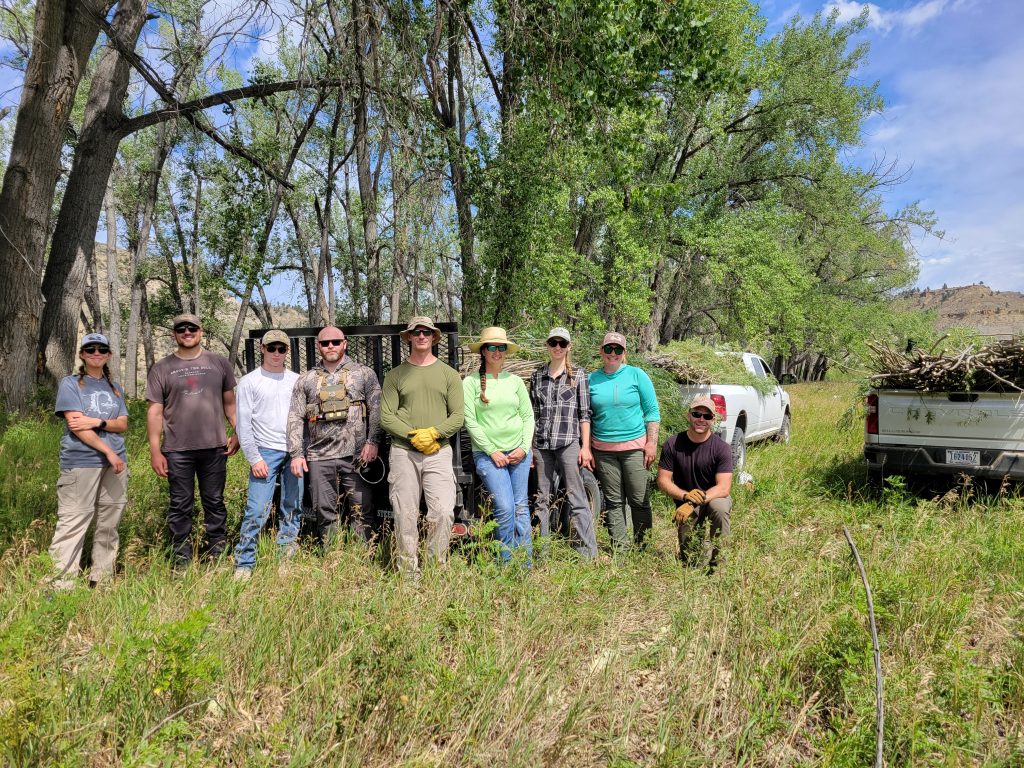
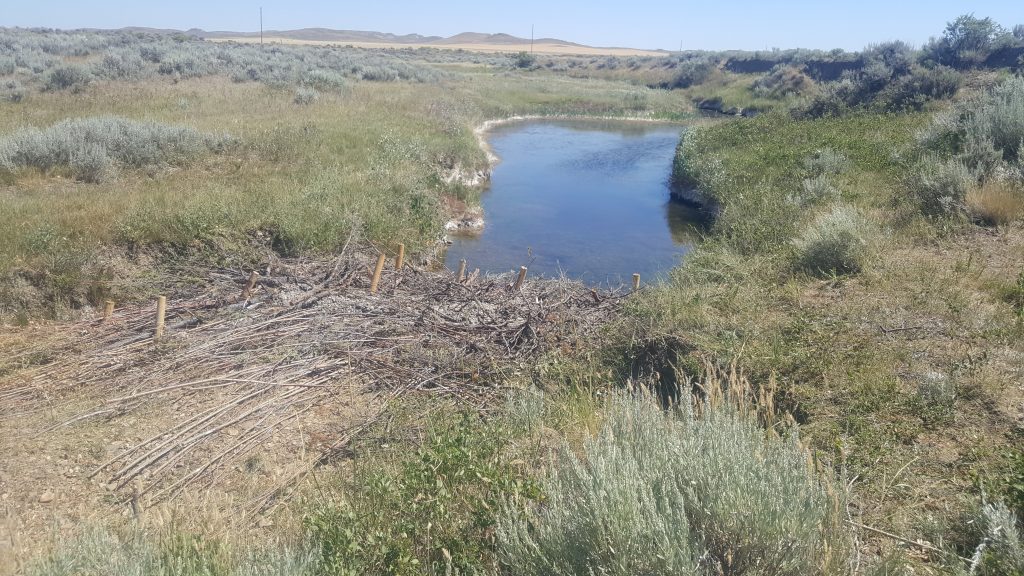
State: Montana
Enhanced Acres: 13; Stream Miles: 4.68
Summary: This project consisted of constructing beaver dam analogs and Zeedyk structures to restore 13 acres of wet meadows located in the Missouri River Breaks region of central Montana.
Partners: National Wildlife Federation, Montana Wildlife Federation, and the National Fish and Wildlife Foundation
Park County Invasive Plant Management
State: Montana
Enhanced Acres: 3,114; Stream Miles: 38
Summary: This project helped control invasive plant species on 3,114 acres of riparian community in the upper Yellowstone River drainage in Montana.
Partners: Park County Cooperative Weed Management Area, Natural Resources Conservation Service, Montana Fish, Wildlife and Parks, Arthur M. Blank Foundation, Rocky Mountain Elk Foundation and private landowners
Cow Creek Beaver Dam Analog Project
State: Montana
Enhanced Acres: 48; Stream Miles: 1
Summary: This project was in cooperation with the USDA Forest Service’s Custer-Gallatin National Forest and consisted of installing beaver dam analog structures to restore 48 acres of riparian corridor on Cow Creek in Southeast Montana.
Partners: USDA Forest Service
Popo Agie Creek Russian Olive Removal
State: Wyoming
Enhanced Acres: 100; Stream Miles: 7
Summary: This project consisted of removing Russian olive on 100 acres of riparian corridor along Popo Agie and Baldwin creeks in Fremont County, Wyoming.
Partners: Popo Agie Conservation District, Wyoming Game and Fish Department, Fremont County Weed and Pest, Fremont County Fire Prevention and private landowners
Sheridan County Conservation District - Tongue River Acme Aquatic Connectivity
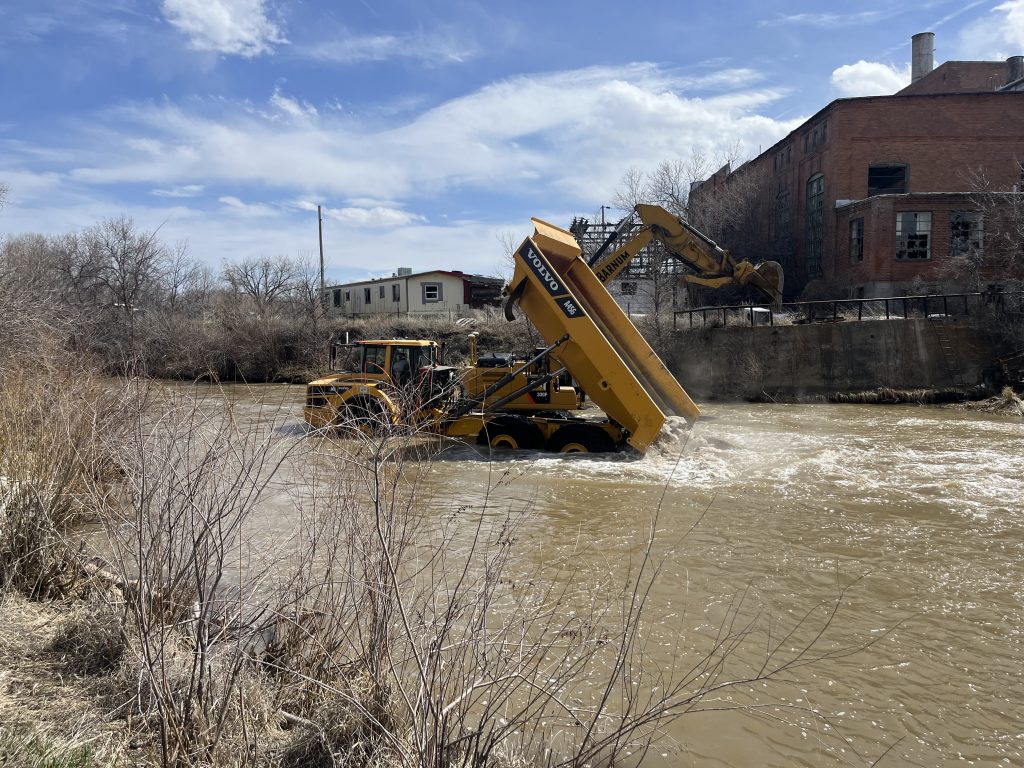
State: Wyoming
Enhanced Acres: 5; Stream Miles: .16
Summary: This project consisted of removing an in-channel water diversion no longer in use, helping improve hydrology and downstream riparian function on the Tongue River.
Partners: Sheridan County Conservation District, Wyoming Game and Fish Department, Sheridan Community Land Trust, The Nature Conservancy, Wyoming Wildlife Natural Resources Trust, Wyoming Department of Agriculture
Ongoing Projects

John Martin Reservoir's Army Corps
State: Colorado
Projected Acres Enhanced: 55; Stream Miles: 1.14
Summary: Black Bridge is owned and operated by the Army Corps of Engineers and is a 544-acre, multi-use wildlife area near Las Animas, Colorado, at the confluence of the Purgatoire and Arkansas rivers. This project aims to restore riparian areas by removing invasive tamarisk within the Black Bridge area. The work will eliminate 55 acres of invasive tamarisk along the Las Animas River. This removal will increase water quantity and quality, open wildlife corridors, increase native riparian vegetation growth, provide recreational access and increase the wild turkeys’ use of the area. This project also includes planting the existing 40-acre food plots with a dryland seed mix suitable for turkeys and other wildlife.
Partners: Army Corps of Engineers
Flint Creek Riparian Improvement
State: Montana
Projected Acres Enhanced: 25; Stream Miles: 0.57
Summary: This project consists of restoring 25 acres of Flint Creek, located in western Montana through channel restoration, revegetation and protection activities.
Partners: Trout Unlimited, Montana Department of Environmental Quality, Montana Fish, Wildlife and Parks
Heart River Fish Creek Confluence Improvement
State: North Dakota
Projected Acres Enhanced: 860; Stream Miles: 6.61
Summary: This project is helping transition an intensively grazed livestock operation to rotational grazing, which includes fencing for new paddocks as well as water sources for livestock. Better vegetative management paired with water sources out of the waterway will increase water quality as well as protect against soil erosion. The work will benefit 860 acres of riparian habitat.
Partners: U.S. Fish and Wildlife Service
Rush Creek Easement and Restoration
State: Nebraska
Projected Acres Enhanced: 1,264; Stream Miles: 3.85
Summary: This project consists of working with the Rush Creek Land and Livestock Company to protect 1,264 acres with a perpetual conservation easement and restore wetland and grassland habitat along the North Platte River by removing Russian olive, restoring wetlands, planting diverse seed mixtures and installing a grazing management infrastructure.
Partners: Ducks Unlimited, U.S. Fish and Wildlife Service
Chat Canyon WMA Timber Stand Improvement
State: Nebraska
Projected Acres Enhanced: 50; Stream Miles: 0.14
Summary: This project consists of 50 acres of timber stand improvement along the Niobrara River.
Partners: Nebraska Game and Parks Commission
Packsaddle WMA Invasive Species Removal

State: Oklahoma
Projected Acres Enhanced : 2,035; Stream Miles: 8.85
Summary: This project consists of removing invasive species, such as Eastern red cedar, along the Canadian River.
Partners: Oklahoma Department of Wildlife Conservation
First Creek Waterway Project
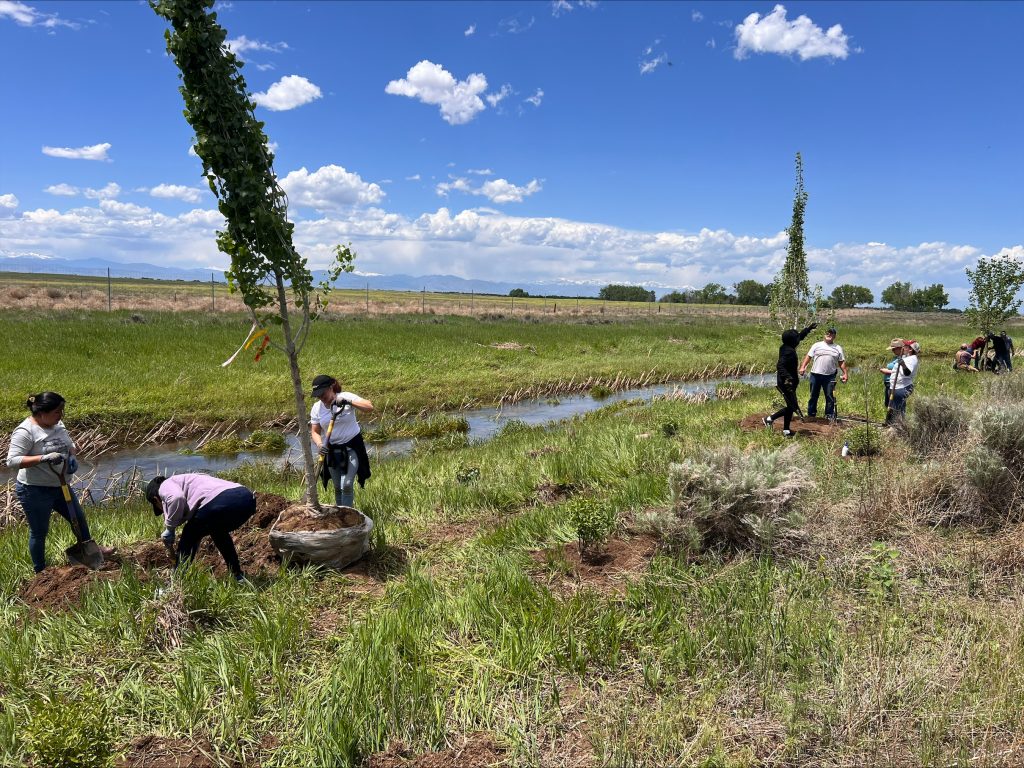
State: Colorado
Projected Acres Enhanced: 140; Stream Miles: 3.5
Summary: This project aims to restore the hydrology and riparian function on 3.5 river miles of First Creek. First Creek is a tributary of the South Platte River that runs through the Rocky Mountain Arsenal National Wildlife Refuge. First Creek has lost natural vegetation and seen increased flooding that has led to a reduction of overall health and function of 140 acres of riparian habitat. This project will mechanically and manually remove invasive trees, grasses and shrubs and replant the 140 acres with native vegetation. The work also includes reshaping portions of the creek bank to improve water quality and reduce flooding events, which will restore the original floodplain and flow patterns.
Partners: U.S. Fish and Wildlife Service
South Fork Republican River Restoration
State: Kansas
Projected Acres Enhanced : 350; Stream Miles: 1.5
Summary: This project seeks to remove Russian olive, Eastern red cedar and salt cedar to improve wildlife habitat on private lands located along riparian areas in the Republican River system.
Partners: Ducks Unlimited, Kansas Department of Wildlife and Parks, private landowners
Flint Creek Riparian Habitat Restoration Project, Phase 2
State: Montana
Projected Acres enhanced: 20; Stream Miles: .25
Summary: This is a continuation of Phase 1. The second phase of the project entails stream channel restoration, fencing and revegetation on Flint Creek in western Montana. The project will improve 20 acres of riparian habitat.
Partners: Montana Natural Resources Damage Program, Montana Department of Environmental Quality, Montana Fish, Wildlife and Parks
Wildcat Bend Acquisition on Lower Yellowstone River
State: Montana
Projected Acres Enhanced: 328; Stream Miles: 2.34
Summary: The Wildcat Bend acquisition is located on the lower Yellowstone River in eastern Montana. The property consists of 328 acres of mature cottonwood galleries and a healthy riparian vegetation community. The site is used by a variety of wildlife species, including wild turkeys. Upon purchase, the property will be transferred to Montana Fish, Wildlife and Parks for ownership and management.
Partners: Montana Fish, Wildlife and Parks, Pheasants Forever
Mill Creek Yellowstone Cutthroat Trout Conservation Project
State: Montana
Projected Acres Enhanced: 35; Stream Miles: 1.22
Summary: This project entails stream-channel restoration and floodplain reconnection using low-tech process-based techniques. When completed, 35 acres and 6,440 linear feet of Mill Creek will be improved. Functioning floodplain connectivity will improve riparian vegetation structure and composition for wildlife habitat and provide water quality benefits. Mill Creek is a tributary to the Yellowstone River in Paradise Valley Montana.
Partners: Western Native Trout Initiative, Trout Unlimited, Forest Service, private landowners
Dugas Conservation Easement Fence, Tree and Irrigation Project
State: Montana
Projected Acres Enhanced: 8.5; Stream Miles: .28
Summary: This seeks to restore cottonwood galleries on the upper Missouri River system in Montana. The project consists of planting native trees and shrubs on an 8.5-acre site and installing a short-term irrigation system and a high fence to eliminate ungulate browsing and help ensure survivability. The project takes place on a property with a conservation easement that the NWTF helped secure in 2012.
Partners: NorthWestern Energy, Upper Missouri Audubon
Niobrara Exclosure Habitat Improvement and Bovee Fire Recovery
State: Nebraska
Projected Acres Enhanced: 56; Stream Miles: 0.76
Summary: This project consists of 56.1 acres of invasive species removal in riparian woodland habitat along the Niobrara River on the Samuel R. McKelvie National Forest.
Partners: Forest Service, Nebraska Game and Parks Commission
Post-Fire Restoration of the Whitfield Wildlife Conservation Area's Wild Turkey Sanctuary
State: New Mexico
Projected Acres Enhanced: 5; Stream Miles: 5
Summary: This project will restore a 5-acre, dedicated wild turkey sanctuary within a 97-acre conservation area that was burned during a 2022 catastrophic wildfire. The turkey sanctuary was originally funded and created by the NWTF Middle Rio Grande Chapter, and this project will focus on restoring the turkey sanctuary to once again meet the needs of wild turkeys. The restoration work aims to provide roosting trees, nest cover and brooding habitat for wild turkeys. A major component of this project is planting and promoting native plants that will thrive with future climate change models and reduce invasive species that have thrived after the fire.
Partners: Valencia Soil and Water Conservation District
Canton WMA Cedar Removal
State: Oklahoma
Projected Acres Enhanced: 215; Stream Miles: 1.52
Summary: This project seeks to remove Eastern red cedars and other woody invasive species on 215 acres along the Canadian River in the Canton Wildlife Management Area.
Partners: Oklahoma Department of Wildlife Conservation
Black Kettle WMA Riparian Restoration Project
State: Oklahoma
Projected Acres Enhanced: 463; Stream Miles: Not applicable
Summary: This project seeks to remove Eastern red cedars and other woody invasive species on 463 acres along the Canadian River on Black Kettle National Grasslands/Cooperative Wildlife Management Area.
Partners: Oklahoma Department of Wildlife Conservation, USDA Forest Service
Polecat Creek Restoration Project
State: Oklahoma
Projected Acres Enhanced: 40; Stream Miles: 1.45
Summary: This project seeks to remove Eastern red cedars and other woody invasive species on 40 acres along Polecat Creek, a tributary of the Arkansas River, on Heyburn WMA.
Partners: Oklahoma Department of Wildlife Conservation
Enhancing Key Upland and Riparian Habitats on Private Lands
State: South Dakota
Projected Acres Enhanced: 350; Stream Miles: Not applicable
Summary: This project will be in partnership with South Dakota Game, Fish and Parks and private landowners to restore and enhance riparian habitats throughout focal landscapes. Projects will include livestock exclusion fencing and water source creation, among others.
Partners: South Dakota Game, Fish and Parks, private landowners
West Slope Riparian Enhancement
State: Wyoming
Projected Acres Enhanced: 67; Stream Miles: 1.51
Summary: The West Slope Riparian Enhancement project is a long-term project aimed at removing or reducing encroaching juniper and conifers in the headwater streams emanating from the west slope of the Bighorn Mountains in Wyoming. These streams flow into the Bighorn Basin, a region with an extremely dry and arid climate. Juniper trees, which are naturally maintained by wildfire, often become dense in areas lacking fire. Dense stands of these trees consume vast quantities of groundwater, which would normally continue a downstream flow maintaining riparian health. This phase of the project is focusing on restoration of 67 acres on Bear Creek.
Partners: Bureau of Land Management, Wyoming Game and Fish Department
Weston Drainage Juniper Removal
State: Wyoming
Projected Acres Enhanced: 295; Stream Miles: 6
Summary: This project is taking place on the Thunder Basin National Grasslands in Wyoming and entails juniper removal. After the juniper is removed, work begins to restore cottonwood and native shrubs. Approximately 295 acres of riparian corridor will be treated. The NWTF is responsible for the tree and shrub restoration portion of the project.
Partners: USDA Forest Service
Hesse Ranch Beaver Dam Analog Structures
State: Wyoming
Projected Acres Enhanced: 8; Stream Miles 1.5
Summary: The Hesse Ranch in Wyoming is the location for this project. It entails construction of multiple beaver dam analog structures along the length of the North Fork of the Powder River. These structures can be effective at improving stream channel structure on highly eroded sites, which is the first step in restoring riparian vegetation. The work will restore about 8 acres along 7,920 feet of stream channel.
Partners: Wyoming Game and Fish Department, Wyoming Governor's Big Game License Coalition
Squaw Creek/Baldwin Creek Russian Olive Removal
State: Wyoming
Projected Acres Enhanced: 100; Stream Miles 14
Summary: This is a continuation of work to remove Russian olive from riparian corridors on these two creeks near Lander, Wyoming. The project takes place on private lands and will treat 100 acres along 73,920 feet of stream corridor.
Partners: Popo Agie Conservation District, Fremont County Weed and Pest, Wyoming Game and Fish Department, Fremont County Fire Prevention
CONNECT WITH US
National Wild Turkey Federation
770 Augusta Road, Edgefield, SC 29824
(800) 843-6983
National Wild Turkey Federation. All rights reserved.
